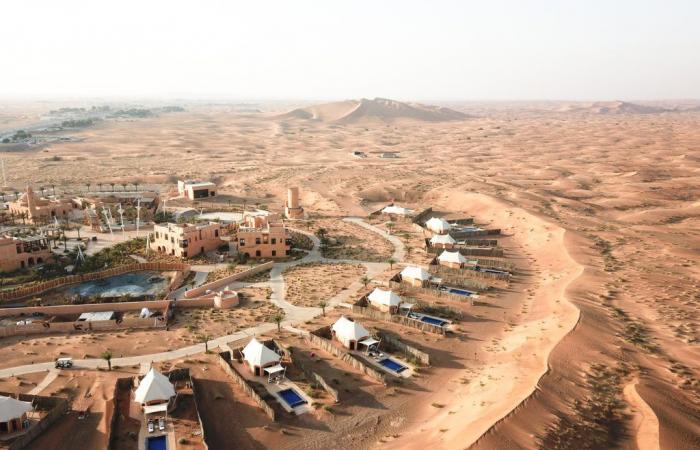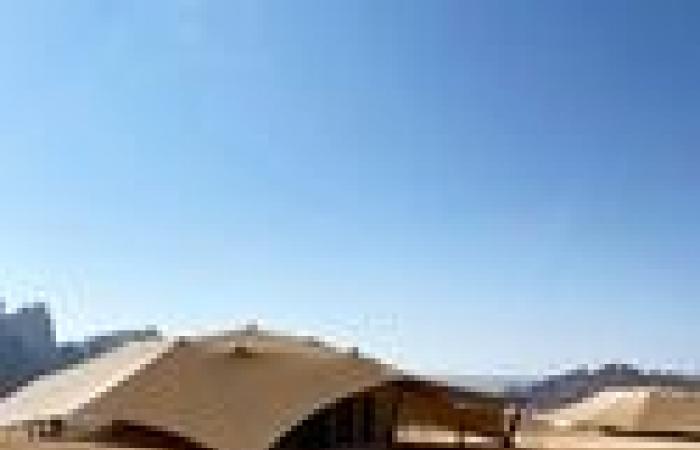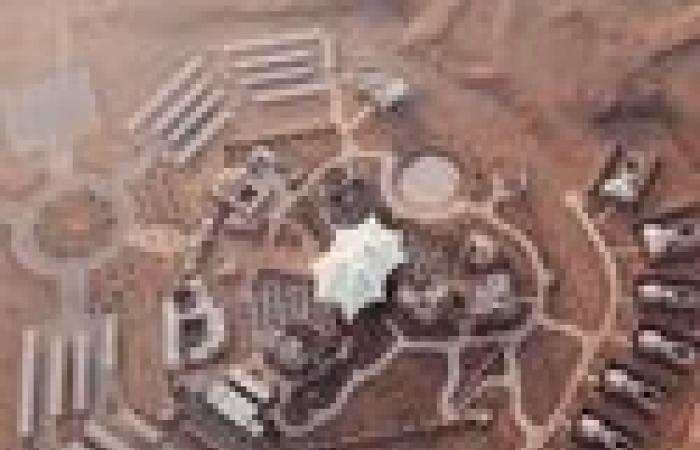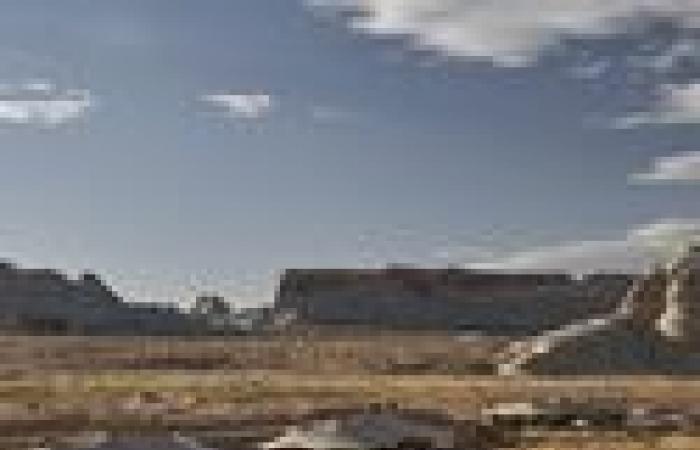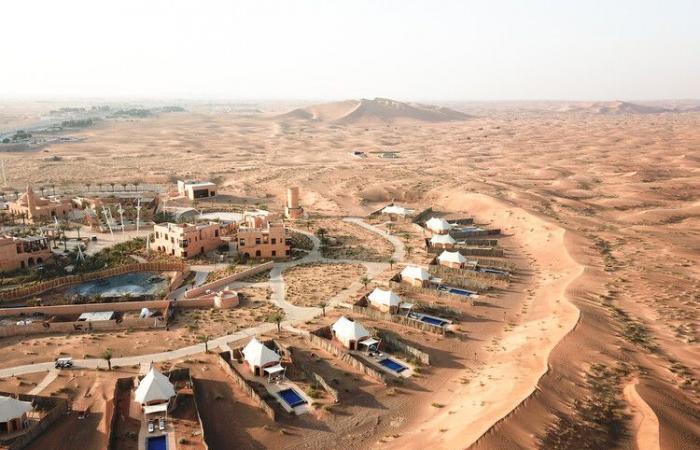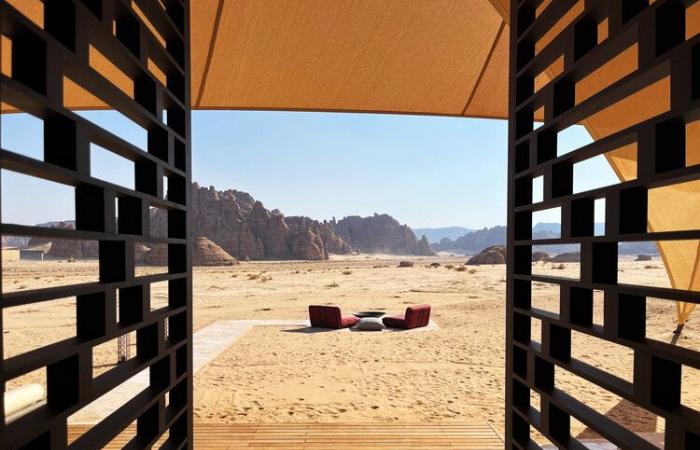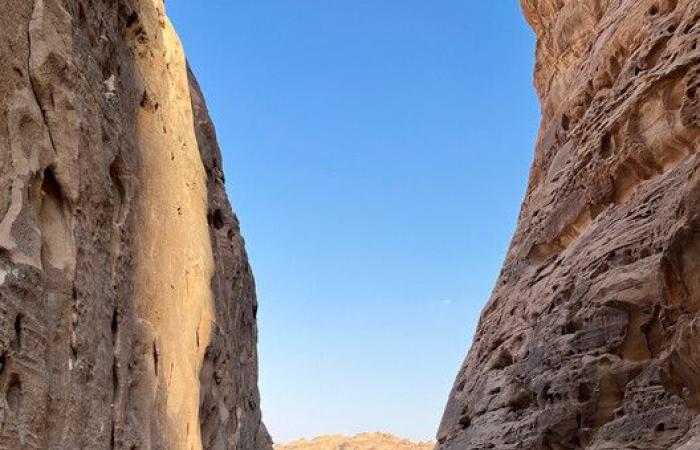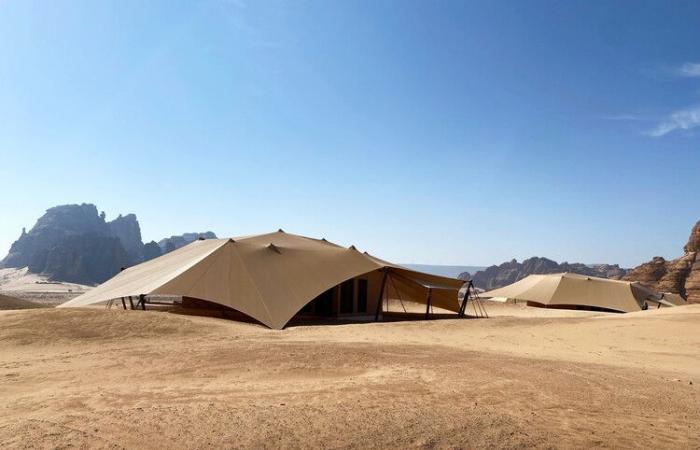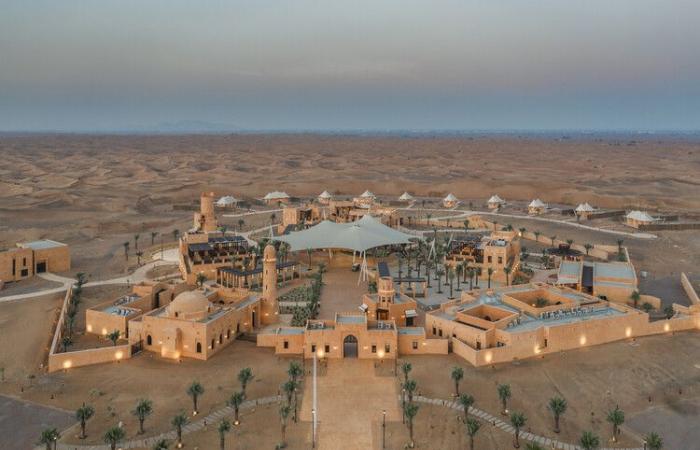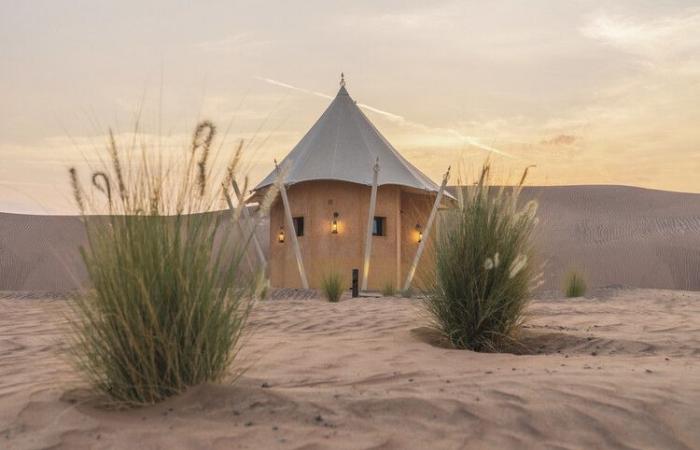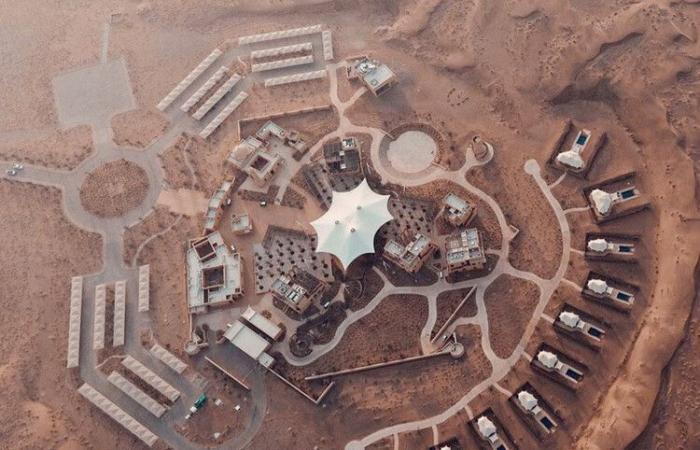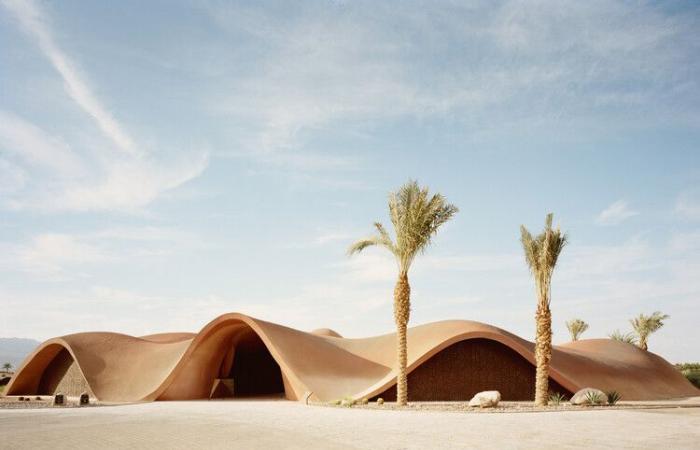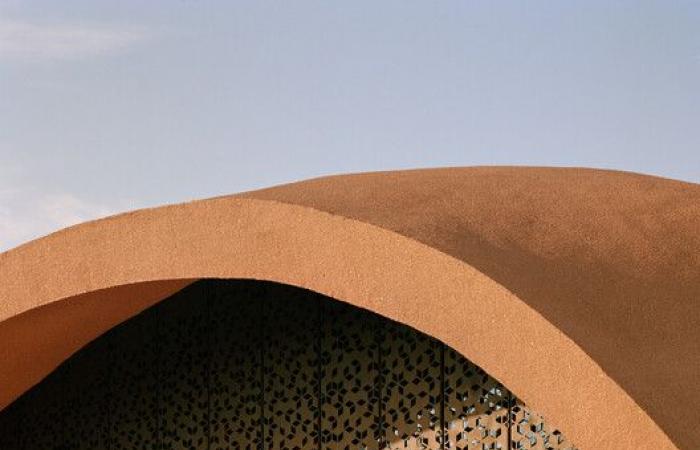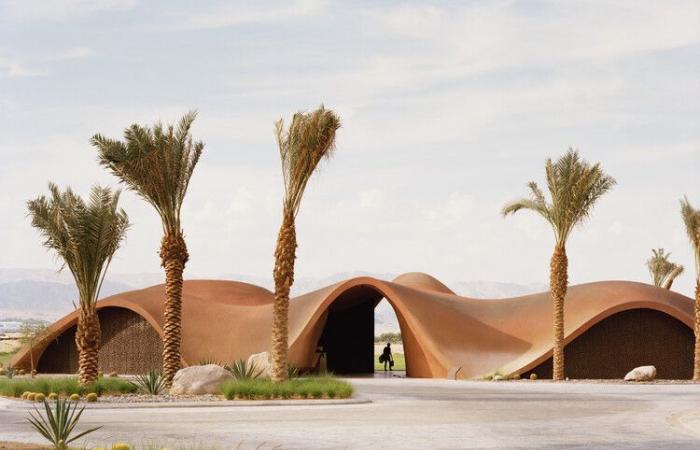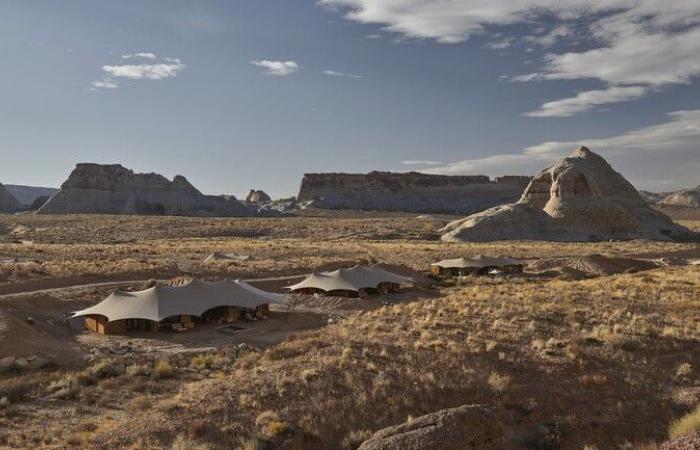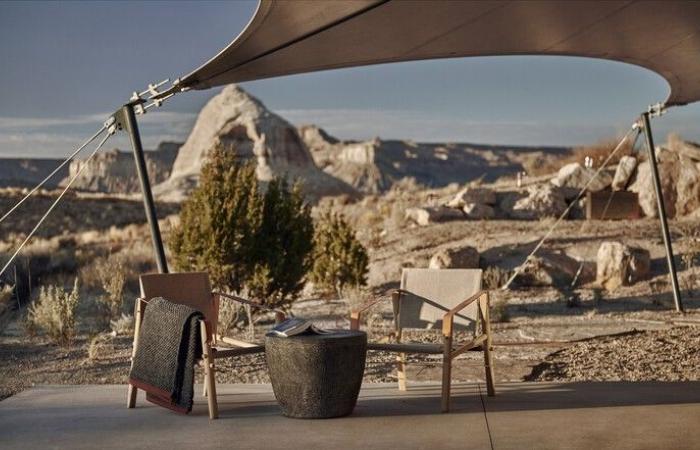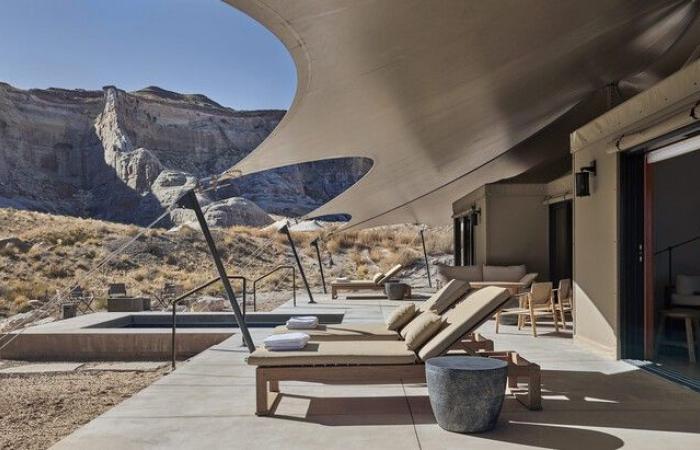To share To share
Or
https://www.archdaily.com.br/br/1013834/intervencoes-arquitetonicas-no-deserto-natureza-intervencao-minima-e-luxo-recluso
Set in the most remote desert landscapes of the Middle East and beyond, these camps offer a unique opportunity to connect with the environment through solitary experience in large, expansive settings.
By avoiding structural interventions that could modify historic landscapes, the designs highlight traditional and local architectural skills, materials and techniques while offering luxurious interiors.

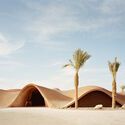
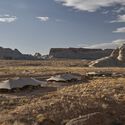
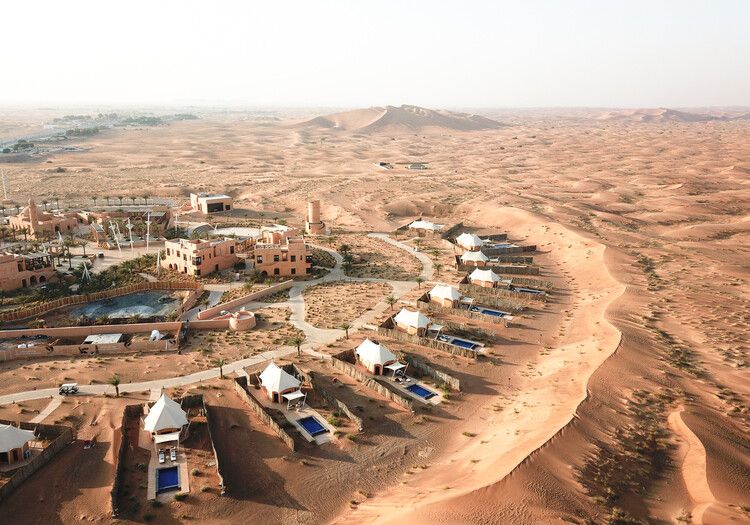 + 8
+ 8
As the Middle East region employs development to transform and diversify its economies toward tourism and other more sustainable sectors – with several business, hospitality and cultural projects in the pipeline, if not already in full flow – these desert camp hotels demonstrate that, in addition to preparing for the future, the region continues to focus on preserving the traditions and environments of its past.
1- Environmental protection
Located just 15 km from the UNESCO World Heritage Site of Hegra in Saudi Arabia, Al-Ula is an ancient oasis city in the middle of the desert, surrounded by tombs and rock formations of architectural and historical importance. As part of Saudi Arabia’s Vision 2030 – the Kingdom’s official strategy for transformation through economic, social and cultural diversification – Banyan Tree Al-Ula Resort clusters 47 suites under canvas tents.
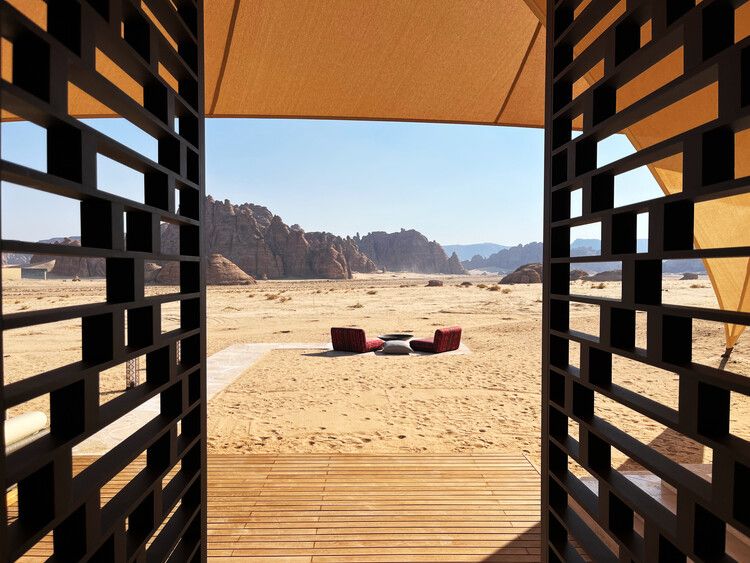
By stretching these sand-colored tents over the built structures, the architects of the AW2 project were able to firstly protect the hospitality spaces from the harsh desert sun. Furthermore, the two-level building envelope also ensures ventilation between the roofs and the penthouse. Meanwhile, the design’s color palettes, materials and patterns – such as the varying horizontal lines of the compacted sand facade matching the rock formations in the background – blend perfectly with the dune landscape.
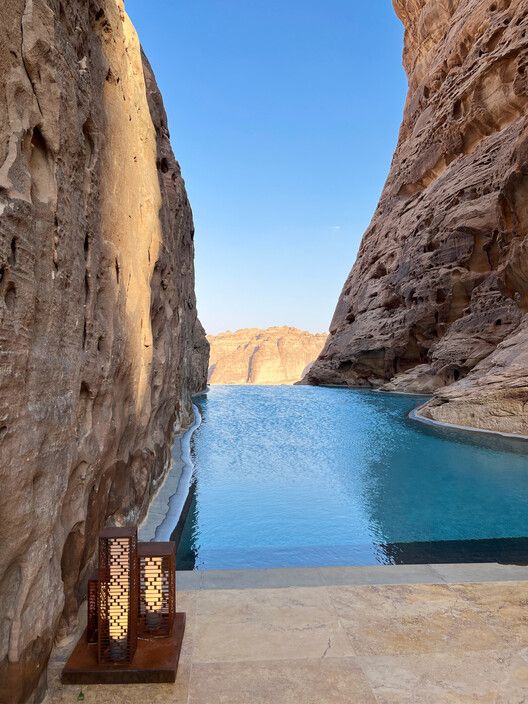
In project planning, the natural topography of the environment precedes the built structures, not the other way around. For example, sand dunes are maintained and used to form corridors and walkways between suites and amenities, and the resort’s signature pool is situated in a natural rock crevice.
Banyan Tree AlUla Resort / AW2 architecture and interiors
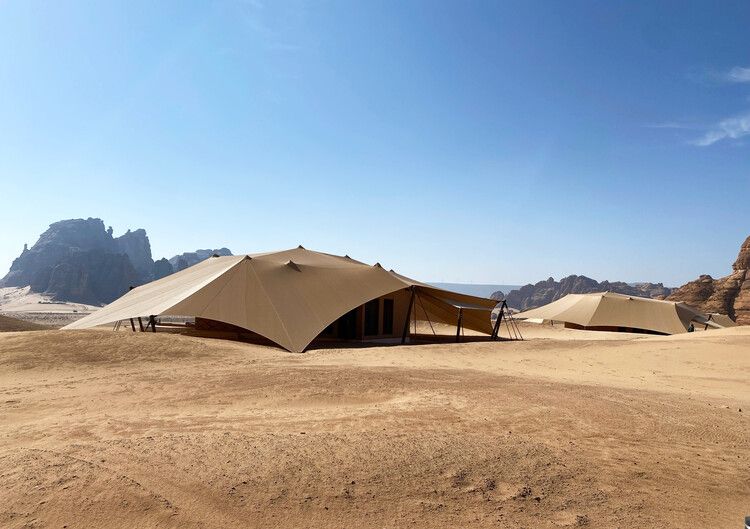
2- Hybrid design mixes the old with the new
About an hour’s drive from the UAE coast and major cities is Mysk Al Badayer Resort, a man-made oasis that offers tourists and locals the opportunity to escape to the nearby desert landscape without straying too far from the civilization. In fact, amenities normally associated with luxury settings, such as a restaurant, cafe, amphitheater, gym, indoor pool and sauna, are just steps away, all located in the covered tented plaza in the center of the resort.
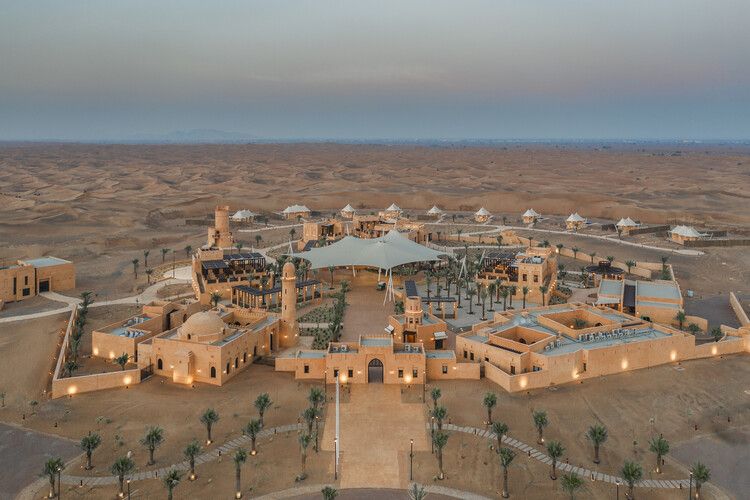
While the ten tented suites that line the complex’s perimeter—and 15 more planned—offer easy access to its services, they also look toward the raw beauty of the desert, combining the comfort of connectivity with a calming sense of isolation.

“Expressing a hybrid identity,” as architects at Wael Al-Masri Planners & Architects describe it, Mysk Al Badayer combines traditional elements of local architecture, such as courtyards, arcades and muxarabi, with a color palette inspired by desert peach. Additionally, the use of tall pergolas provides shady protection, while the design carefully incorporates modern planning systems, repetitive architectural forms, advanced construction technologies and the use of contemporary stretch fabrics.
Mysk Al Badayer Retreat, Desert Camp / Wael Al-Masri Planners & Architects
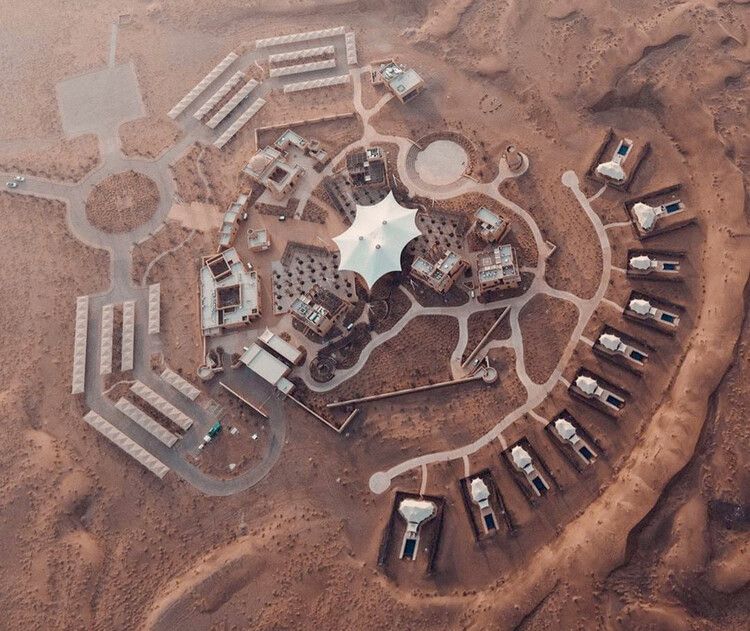
3- Combining architecture and environment
While the first two projects featured utilize ancient features of their surroundings, such as sand dunes and rock formations, or local and traditional architectural typologies, palettes and features, the Ayla Golfclub resort in Aqaba, Jordan, utilizes more contemporary materials such as engineered concrete. spraying, to produce a structure that mimics the undulations of the desert.
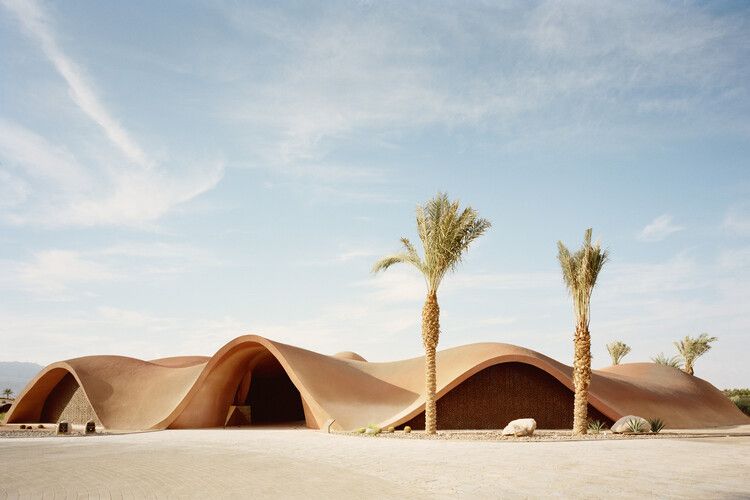
Part of a 44 square kilometer leisure development that will include residential, hotel and commercial areas, the 1,207 square meter Clubhouse “establishes a unique connection with nature, capturing the striking and vibrant beauty of the undulating desert landscape”, explains Oppenheim Architecture, as its continuous surface “emerges from the sand”.
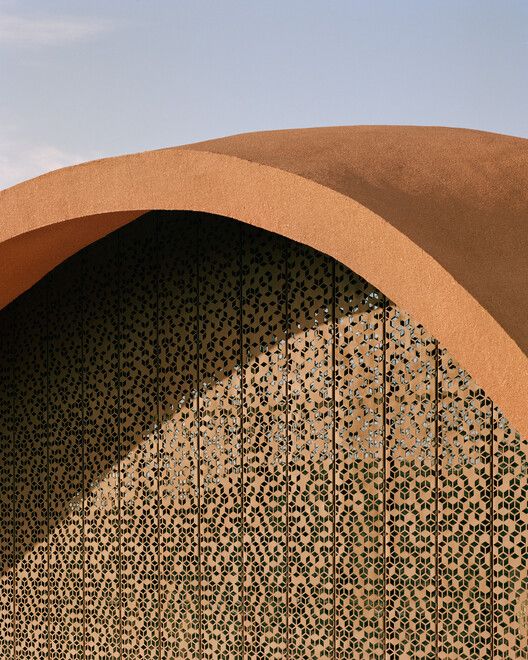
Instead of employing local artisans skilled in traditional architectural work, Ayla Golfclub chose to teach the innovative shotcrete technique to project workers. This allowed them to take responsibility for construction while also acquiring specialist shotcrete skills on their own. However, not everything is about contemporary skills. A local artist applied a traditional pigmentation technique to the interior surfaces, giving them a raw, unassuming appearance. Additionally, corten steel screens were perforated with triangles in motifs inspired by traditional Jordanian patterns to create muxarabis on the facade.
Ayla Golfclub / Oppenheim Architecture
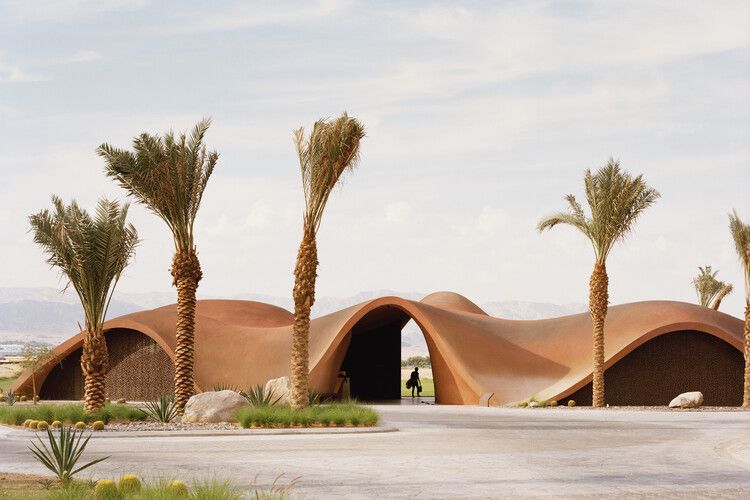
4- From one desert to another
While the materials and architectural techniques used to build these projects are local, the concept of a luxury desert camp, which combines high-quality amenities and design with the vastness of the open sky, transcends borders. Located in rocky thicket near Monument Valley – a part of the Navajo Nation Native American reservation straddling the Utah-Arizona border in the US – Camp Sarika makes the most of the iconic landscape, surrounded by sandstone mountains and mesas that grace many Hollywood Wild West movies.
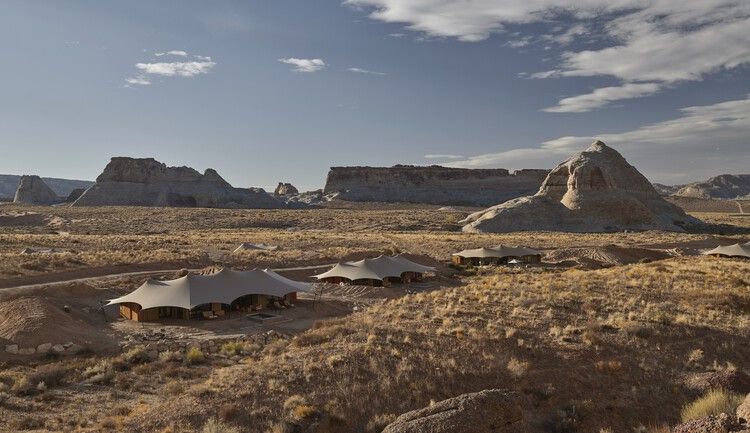
Inspired by the safari camps of Africa, Camp Sarika is North America’s first all-season luxury camp. It is designed to withstand the site’s natural temperature variation, which ranges from 20 to 105 degrees Fahrenheit. Each tent utilizes a three-layer membrane: a custom polyester roof liner, a patterned waterproof Ripstop fabric, and a pre-stressed, recyclable structural canvas that stretches over the rest of the structure. This ensures passive cooling and shelter from the open air.
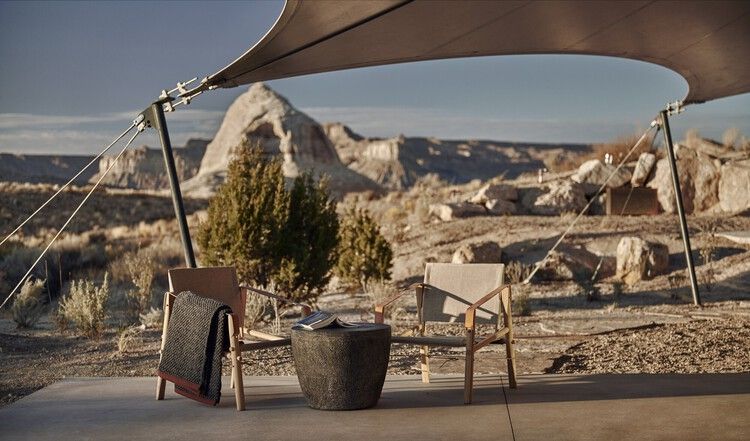
With few additional amenities, Camp Sarika stands out for its luxurious interior. Located between unobstructed views of the Reserve’s mesas to the east and sunsets to the west, the canvas overhang offers shaded outdoor spaces with heated pools, lounge chairs and fire pits, providing a unique experience for its visitors.
Camp Sarika / Amangiri + Luxury Frontiers
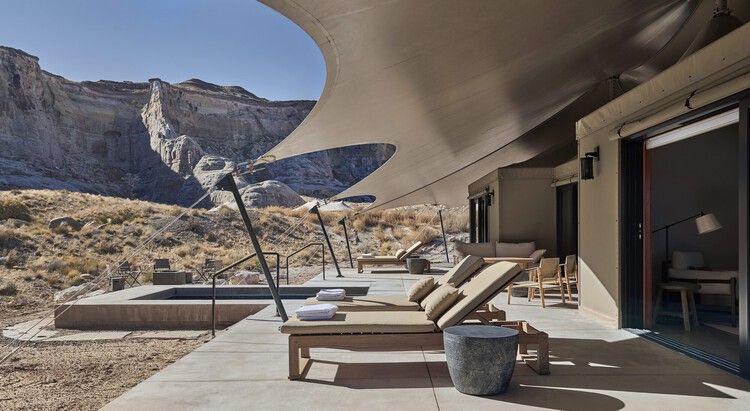
Find these Middle Eastern desert camps and other isolated landscapes around the world in this ArchDaily folder.
Tags: Architectural interventions desert nature minimal intervention secluded luxury
--
